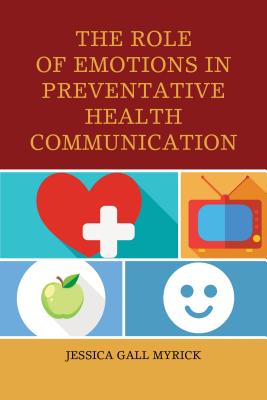Health-related media permeate our modern experience, from using an online search engine to reading a pamphlet about vaccinations at the doctor’s office or watching a television news report on the dangers of sitting too much. This book makes the argument that if prevention-focused health messages are to motivate behavior change, they must tug at the heartstrings, and researchers need to understand more precisely how different emotional reactions influence health message effects. In making this case, this book takes a quantitative, social science-based approach to understanding the role of emotions in shaping individual-level effects to preventative health messages disseminated through mass media channels. The book focuses on how discrete emotions evoked by preventative health media messages influence how audiences respond to those messages. Are they persuaded to change their behavior? Will they seek more information? Will they share information with others? Will they support prevention-focused policies? While a rich literature exists on the effects of health-related fear appeals on audiences, researchers have yet to fully explore the role that other discrete emotions play in health communication processes and outcomes. This book fills that gap by providing an overview of the role of nine different emotions—both positive and negative—in various prevention-focused health communication settings. It also introduces readers to commonly employed emotional theories and concepts and relates them to literature on prevention-focused health and policy communication. In addition to reviewing and synthesizing the literature, this book offers new directions to researchers hoping to improve the effectiveness of prevention-focused health messages.
Health-related media permeate our modern experience, from using an online search engine to reading a pamphlet about vaccinations at the doctor’s office or watching a television news report on the dangers of sitting too much. This book makes the argument that if prevention-focused health messages are to motivate behavior change, they must tug at the heartstrings, and researchers need to understand more precisely how different emotional reactions influence health message effects. In making this case, this book takes a quantitative, social science-based approach to understanding the role of emotions in shaping individual-level effects to preventative health messages disseminated through mass media channels. The book focuses on how discrete emotions evoked by preventative health media messages influence how audiences respond to those messages. Are they persuaded to change their behavior? Will they seek more information? Will they share information with others? Will they support prevention-focused policies? While a rich literature exists on the effects of health-related fear appeals on audiences, researchers have yet to fully explore the role that other discrete emotions play in health communication processes and outcomes. This book fills that gap by providing an overview of the role of nine different emotions—both positive and negative—in various prevention-focused health communication settings. It also introduces readers to commonly employed emotional theories and concepts and relates them to literature on prevention-focused health and policy communication. In addition to reviewing and synthesizing the literature, this book offers new directions to researchers hoping to improve the effectiveness of prevention-focused health messages.
Get The Role of Emotions in Preventative Health Communication by at the best price and quality guranteed only at Werezi Africa largest book ecommerce store. The book was published by Bloomsbury Publishing Plc and it has pages. Enjoy Shopping Best Offers & Deals on books Online from Werezi - Receive at your doorstep - Fast Delivery - Secure mode of Payment
 Jacket, Women
Jacket, Women
 Woolend Jacket
Woolend Jacket
 Western denim
Western denim
 Mini Dresss
Mini Dresss
 Jacket, Women
Jacket, Women
 Woolend Jacket
Woolend Jacket
 Western denim
Western denim
 Mini Dresss
Mini Dresss
 Jacket, Women
Jacket, Women
 Woolend Jacket
Woolend Jacket
 Western denim
Western denim
 Mini Dresss
Mini Dresss
 Jacket, Women
Jacket, Women
 Woolend Jacket
Woolend Jacket
 Western denim
Western denim
 Mini Dresss
Mini Dresss
 Jacket, Women
Jacket, Women
 Woolend Jacket
Woolend Jacket
 Western denim
Western denim
 Mini Dresss
Mini Dresss






























































